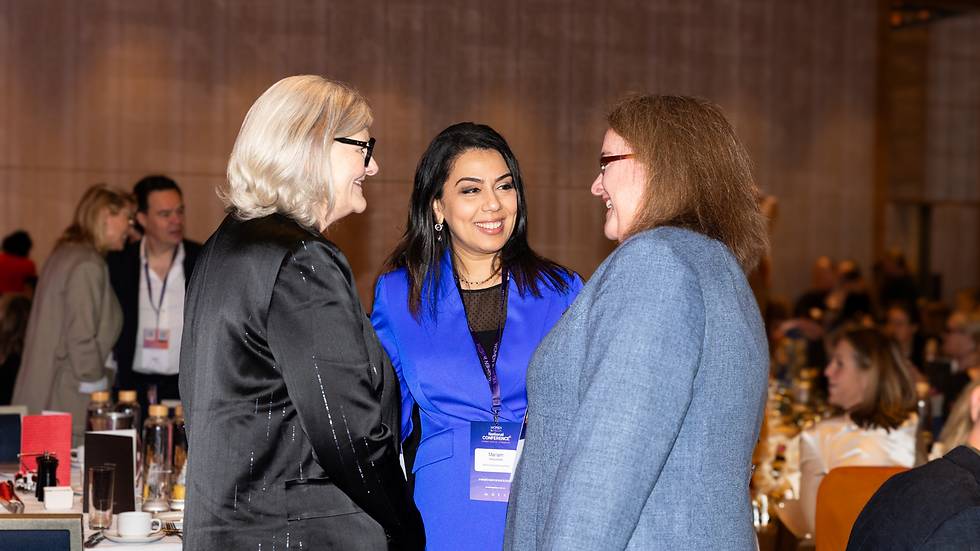
Words by Catherine Fox
The power and skill on display at this year’s Women’s World Cup, and the uplifting Matildas campaign, was covered by some equally skilled women sports journalists.
The WWC was an uplifting story about proving the critics wrong, whether on the sports field, or in attracting media audiences and commercial sponsorship.
But while women were regularly on screen and covering matches during the event, the picture in sports media was less rosy.

In Australia, just 18% of sports bylines were women’s, with 41% in political reporting and 37% in finance reporting, according to Women in Media’s 2023 Media Scorecard, released in February.
A wave of new Matildas fans is welcome but doesn’t automatically change old attitudes or remove barriers to entry for women in male-dominated areas. Even experienced sports reporters like Amanda Shalala, Deputy Editor of ABC Sport, and a speaker at Women in Media’s September conference, says she still gets asked whether she actually likes sport?
Turns out she does, and most of the Women in Media members who were at the conference or responding to surveys told us they were also deeply invested in their jobs, despite workplace barriers.
Luckily, this year also saw a step up in measurement and transparency about the key issues that impact women in the workforce; why that matters and what needs to change to address them.
It’s a welcome shift towards greater accountability from organisations and employers across the board. It’s been a key driver of this year’s Women in Media research which has delved into what members experience, the issues that matter to them and how to tackle systemic barriers to progress.
On the national stage, a focus by the Federal Government has also been driving visibility –through the reporting by the Workplace Gender Equality Agency, the Status of Women Report Card, the Women’s Economic Equality Taskforce report and development of the National Strategy to Achieve Gender Equality.
Women in the competitive media sector are tenacious but also know the even playing field is far from reality despite more focus on these issues.
There’s a familiar dynamic across the sector. Media content focused on women and diversity has been on the increase, from news and sports coverage to commercials. But behind the scenes many workplaces have been slow to reflect the same progress in gender equity.
The pipeline isn’t the problem. There’s no shortage of outstanding women working in media jobs of all kinds.
But they’re not as well represented in senior levels of media organisations; are frustrated with lack of progression, and nearly a third surveyed by Women in Media said they were considering leaving their jobs.

That disturbing finding led industry icon, ABC Chair Ita Buttrose, to give some firm advice to the audience at the Women in Media Conference: don’t give up your jobs.
Her own career was a series of ups and downs, but time and again she realised how crucial and rewarding it was for women to be at the table and influence decisions.
Her speech got a standing ovation – and was a reminder of the importance, dynamism and satisfaction that comes from media jobs, despite the pressure many employees and media organisations are under.
That has only ramped up this year. The disruption of Australia’s media landscape includes challenges from attracting and retaining shrinking and fragmented audiences, competition from streaming services, dealing with AI and growing social media platforms, all leading to employee churn and downsizing.
Women in the media often come off worse from this kind of upheaval, as 2023 data and feedback from members revealed. It also pinpoints what’s needed to give women a fair go: clearer progression paths, career flexibility, upskilling and mentoring.
The message to the media sector is loud and clear: it can’t afford this potential brain drain of experience and skills.
As the year ends, the latest Workplace Gender Equality Agency data shows a small decrease in the gender pay gap but notes it was due to a similarly small increase in women in management, while women in lower paid jobs were less likely to see improvements in their pay packets.
This is also the case for women freelancers and contract workers who are finding it hard to make ends meet on low rates and precarious commissions.
Media employers have plenty to gain in ensuring quality content from establishing fair freelance rates and commissioning systems.
That was a key issue nominated by members who were surveyed at the beginning of 2023 about what they wanted to see in the monthly newsletter.
The 2023 content produced by a range of Women in Media members also covered a snapshot of women in sports journalism, emerging women, the dynamics of covering International Women’s Day, progress for women in advertising, and the uplifting story of setting up a newsroom in Timor-Leste.
Many experienced women, who took part in 2023 Women in Media coaching and the Relaunch program, had faced redundancy and struggled to get another job, running into ageism and motherhood penalties that derailed them.
During this year, attention in the sector has also been on the critical need to attract and retain employees from diverse backgrounds – and recognise the value in stories and content which genuinely reflects the community.
Data brings the critical transparency needed to make progress across all these issues. There’s now strong momentum to translate the findings into action.
The Women in Media message for media employers of all kinds is to become focused and intentional in addressing the barriers that are holding women back as we head into 2024.
It can’t happen without the kind of attention and investment that made the Matildas soar. As they say: #tilitsdone
